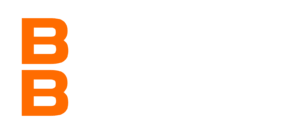
The Challenges of In-House MAP Monitoring
Minimum Advertised Price (MAP) plays a crucial role in maintaining brand value, pricing integrity, and fair competition in the market. With the increasing prevalence of MAP policies among manufacturers and suppliers, businesses face several challenges when it comes to in-house MAP monitoring. In this blog post, we will explore these challenges and discuss possible solutions.
Monitoring minimum advertised prices can be a complex task for businesses. One of the primary challenges is navigating the intricacies of pricing strategies. Companies employ various pricing tactics, such as promotional discounts, bundle pricing, or dynamic pricing, which can make it difficult to enforce MAP consistently. Additionally, the competitive landscape adds to the complexity. With products being sold across multiple platforms and channels, tracking and monitoring prices become a daunting task. Ensuring compliance with MAP policies becomes challenging when prices fluctuate rapidly in the market. Non-compliance with MAP policies can result in severe repercussions, including damage to brand reputation and strained relationships with suppliers.
From a legal standpoint, in-house MAP monitoring involves navigating potential pitfalls. MAP policies play a vital role in maintaining fair competition, preventing price erosion, and protecting brand value. However, there is a fine line between enforcing MAP policies and engaging in anti-competitive practices. Businesses must be cautious not to violate antitrust laws or engage in predatory pricing. Understanding the legal risks associated with MAP monitoring is crucial. Violations can lead to substantial fines, legal disputes, and damage to a company’s reputation. Therefore, it is essential for businesses to stay updated on relevant laws and regulations and ensure compliance to mitigate legal risks.
Advancements in technology have provided solutions to alleviate the challenges of in-house MAP monitoring. Price tracking tools, data analytics, and automation options have emerged as valuable resources for businesses. Price tracking tools allow companies to monitor prices across various e-commerce platforms and detect any violations of MAP policies. Data analytics help businesses gain insights into market trends, competitor pricing strategies, and the effectiveness of their MAP enforcement efforts. Automation options enable businesses to streamline the monitoring process, reducing manual efforts and increasing efficiency. However, it’s important to note that technology is not a one-size-fits-all solution. Each business must carefully consider its specific needs and select the right tools and technologies that align with their MAP monitoring goals.
In-house MAP monitoring presents several challenges for businesses. From the complexities of pricing strategies and the competitive landscape to the legal risks and technological considerations, businesses must navigate a multifaceted landscape to ensure compliance. Implementing effective strategies, leveraging technology, and staying informed about legal requirements are crucial for successful MAP monitoring. By addressing these challenges head-on, businesses can maintain pricing integrity, protect brand value, and foster fair competition in the market.
